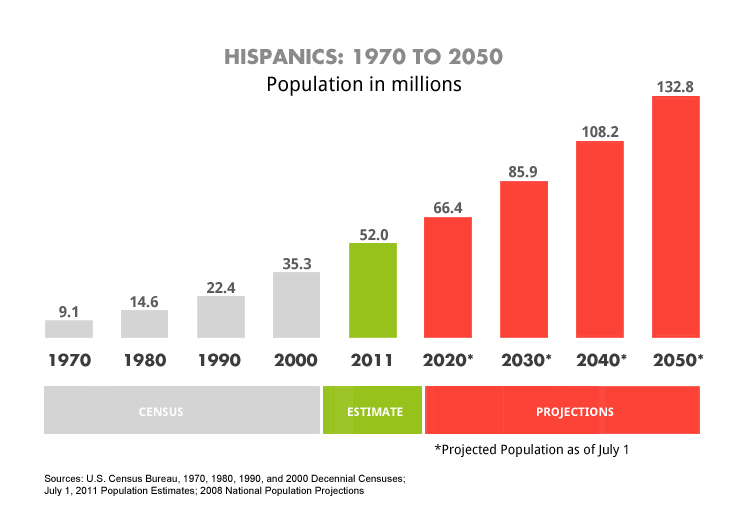First comes culture.
Then comes language.
Marketing correctly to Hispanics.
 It was recently announced that there are now more Spanish speakers in the United States than in Spain.
It was recently announced that there are now more Spanish speakers in the United States than in Spain.
According to the prestigious Instituto Cervantes’ study titled "Spanish: A Living Language" (link in Spanish), the U.S. is home to approximately 52.6 million Spanish speakers, of which 41 million are native speakers and 11.6 million are bilingual. This makes the U.S. the second-largest country in the world where Spanish language is used most.
While Mexico still remains king as the world’s number one Spanish-speaking country, with a whopping 121 million speakers, it may not hold its crown forever. The U.S. Census is estimating that the Hispanic population in the U.S. will grow to 132.8 million by 2050.

Does this mean that brands need to start launching more marketing strategies in Spanish? Not necessarily. The U.S. Hispanic population growth is being driven by births, not immigration, and Hispanic Americans are 100% fluent in English. Even Hispanic immigrants who are not totally bilingual end up learning some English because they are constantly surrounded by it. So while not all marketing strategies geared towards Hispanics need to be in Spanish, they do need to be culturally relevant to have a stronger connection with them. A stronger connection means that a brand can have a better chance of grabbing a bigger slice of the 1.5 trillion dollar annual-Hispanic-buying-power pie.
Studies have shown that Hispanics spend more money compared to the U.S. daily average: $96 vs. $90, they’re also adopting smartphones at a higher rate, spend more time online, and are 74% more likely to be influenced by friends or family on purchase decisions compared to non-Hispanics. This reality is changing consumer behavior and brand engagement opportunities. That is why it is crucial for brands to give Hispanics the attention they deserve by integrating culturally relevant insights in their marketing strategies from the start, not after they have already been created. Then, and if needed, the integration of Spanish language, or even ‘Spanglish’, will come out naturally.
This is the approach we use at CultureSpan Marketing. Operating in El Paso, Texas – one of the largest border cities in our country, and the immediate proximity to Ciudad Juárez, México, gives us the perfect binational scenario to dig deep into the heart of Hispanic culture and journey across all levels of acculturation. We’re in the perfect spot to craft true culturally relevant messages to help a brand’s products and services have more meaning for Hispanics, regardless of their level of immersion in mainstream American culture, while also sparking the curiosity for new experiences of non-Hispanic consumers.
If you want your brand to be marketed correctly to Hispanics, give us a call at (915) 581-7900
or contact Gabe Acunã.
Comments